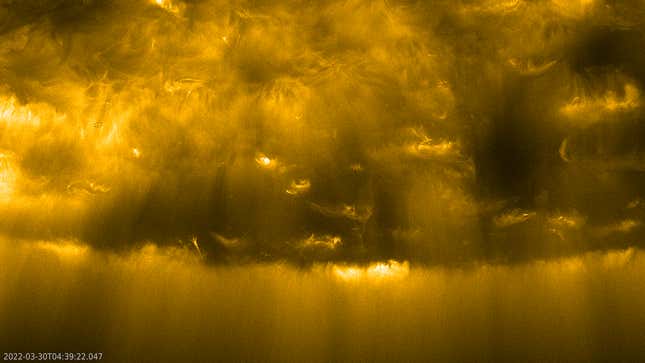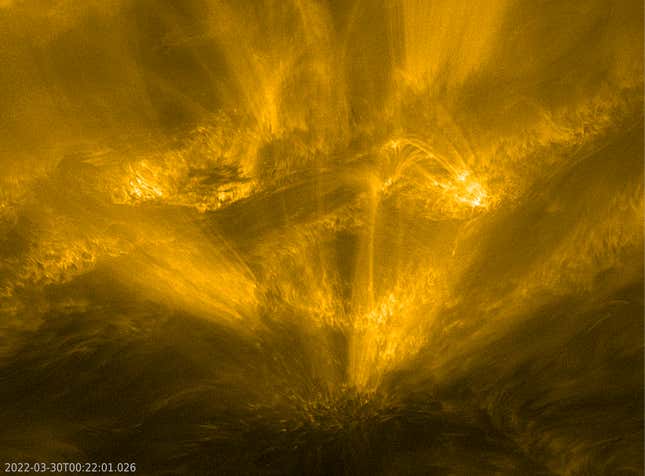
We’re drooling over the latest image dump from the Solar Orbiter mission. These incredible pictures and videos, captured during its close approach in March, highlight the awesome power of this probe to show us our host star in a whole new light.
Solar Orbiter made a close approach to the Sun—known as a perihelion—on March 26. The spacecraft, launched in February 2020, is a joint project between the ESA and NASA. It’s investigating the Sun using a suite of 10 instruments, including the Extreme Ultraviolet Imager, which took most of the images seen here. The orbiter’s mission is to help us understand the heliosphere by studying phenomena like the solar wind and the Sun’s magnetic field.

